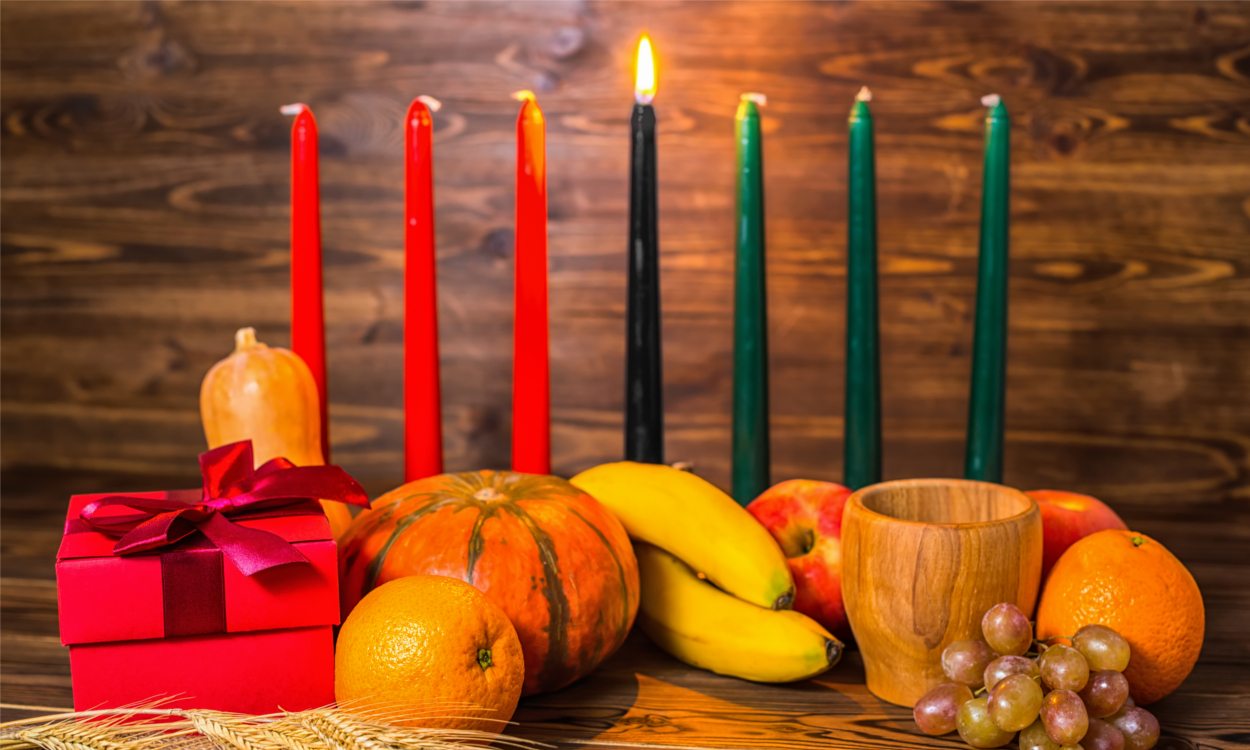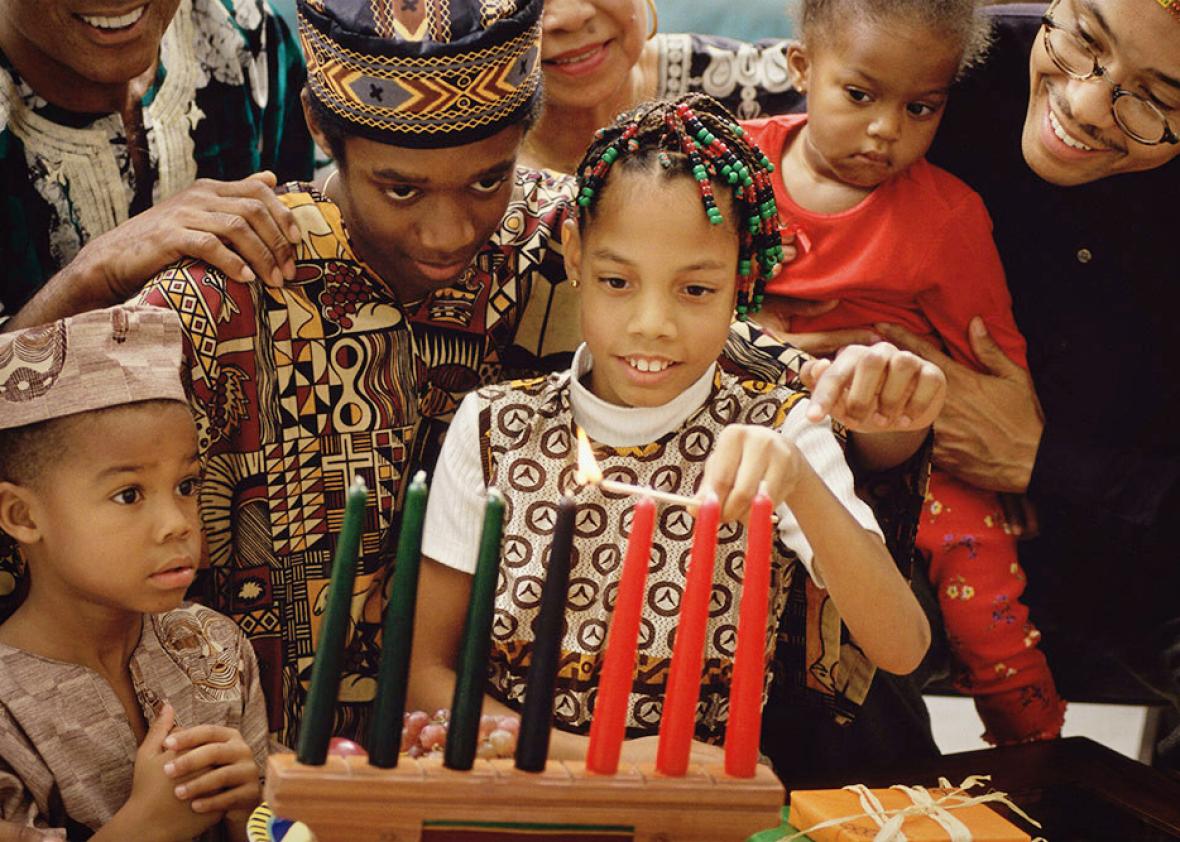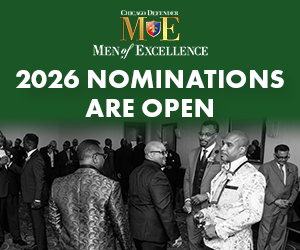As of 2016, Chicago has a population of 887,608 African Americans living in the city and yet very few people celebrate the holiday that was designed to unite and celebrate the African American community.
Even with the cultural re-emergence of 1960-esque sentiments with the rise of the social justice campaign of Black Lives Matter, Jay-Z debuting the critically acclaimed “4:44” album that promoted self-awareness and fiscal responsibility within the community and Jordan Peele’s “Get Out” that showcased the tenuous racial undertones of the acceptance and desirability of Black culture among the many Black programs that are prominently displayed and exalted right now to highlight the Black experiences, the kinara is still missing from many minority millennials tables.
 Why?
Why?
Kwanzaa History
Kwanzaa is a holiday that was originally developed by Dr. Maulana Karenga and was first celebrated on December 26, 1966 through January 1, 1967.
This holiday was originally created as a means to reconnect the African American community to their African roots after a deadly riot broke out in the predominantly Black community of Watts in Los Angeles.
Inspired by African culture, Dr. Karenga combined different aspects of the Zulu and Ashanti tribes’ harvest celebrations to cultivate the holiday called Kwanzaa. Kwanzaa is derived from the Swahili phrase “matunda ya kwanza,” which means “first fruits”
Controversies of Kwanzaa
Despite the innocent intentions of Kwanzaa, the holiday itself is plagued with unsettling events that are tied to the celebration, thanks to its founder Dr. Karenga.
 Dr. Karenga has a prestigious past earning a master’s degree in political science and African studies at the University of California at Los Angeles, producing a multitude of African-centric books including, “Introduction to Black Studies” and “Selections From Husia: Sacred Wisdom of Ancient Egypt.” He has also published a host of different articles on Black Scholar and was closely tied to Malcolm X and the Black Pride movement. However, he also has a checkered reputation with African Americans.
Dr. Karenga has a prestigious past earning a master’s degree in political science and African studies at the University of California at Los Angeles, producing a multitude of African-centric books including, “Introduction to Black Studies” and “Selections From Husia: Sacred Wisdom of Ancient Egypt.” He has also published a host of different articles on Black Scholar and was closely tied to Malcolm X and the Black Pride movement. However, he also has a checkered reputation with African Americans.
Dr. Karenga took a pivotal role helping the Los Angeles police limit Black rioting after Dr. Martin Luther King Jr.’s assassination in 1968. His mediating skills were highly sought after with high ranking political figures such as California Governor Ronald Reagan, ex-Los Angeles mayor Sam Yorty and Senator Hubert Humphrey, to name a few.
These actions caused Dr. Karenga to become reviled within the Black Power movement; while some African Americans took issue with the philosophies he practiced when dealing with the concerns of Black people, other African American extremists thought that his increasing association with White politicians was problematic in and of itself.
US vs. the Black Panthers
The Black Power movement in the late 1960’s was helmed by two political groups who held the same objective of creating unity, strength and economic opportunity for African Americans in the United States. But these two groups held opposing views on how the Black Power Movement would be able to achieve this goal.
The US Black nationalism movement, created and spurred by Dr. Karenga, sought to promote change while adhering to the normal political process. The Black Panthers, lead by Huey P. Newton, held more extremist ideologies seeking to create a new system that would grant, “…land, bread, housing, housing, education, clothing, justice, and peace. And as our major political objective, a United Nations-supervised plebiscite to be held throughout the black colony in which only black colonial subjects will be allowed to participate, for the purpose of determining the will of black people as to their national destiny.”
The dissonance between the two group reached its boiling point after two Black panther members were killed by US gunmen in 1969.
Karenga’s reputation continued to deteriorate after being sentenced to jail for three years on charges of assaulting a female US member.
 Kwanzaa kaput?
Kwanzaa kaput?
Kwanzaa experienced a renaissance in the 90’s thanks to the legitimacy brought back to Dr. Karenga’s name after returning to meditating the Los Angeles community when the Rodney King verdict stimulated riots throughout the community.
The participation in Kwanzaa has since dwindled despite the positive ideology, with only an estimate of between one million participants enjoying the celebration annually.
The ultimate hindrance to the holiday is that people weren’t raised celebrating the tradition like they celebrate Thanksgiving or Christmas, says some.
Reggie Guyton, an actor at the Abraham Lincoln Presidential Library and Museum, says, “What’s really stopping me is just taking the time to reflect and acknowledge. It’s so easy for me to just completely forget because I wasn’t brought up with it.
But all hope isn’t lost yet for Kwanzaa.
Even though the holiday isn’t celebrated as once designed by Dr. Karenga, with the lighting of seven different candles over the course of a week– it is still being acknowledged.
Kwanzaa is celebrated or acknowledged typically in the course of one day, on college campuses like Chicago State University and University of Illinois Chicago.
Furthermore, churches like Trinity United Church of Christ in Chicago make it a habit to host an annual Kwanzaa celebration, albeit only one day during the week. The DuSable Museum has a two-day event and other groups have programs.
So, all hope for Kwanzaa isn’t lost yet. When asked would he consider practicing the tradition, Guyton said, “I totally would…I already try to keep some of the principles in my everyday life.”
Ceremony
The first candle of the ceremony is lit.
This candle is black, representing the people, it’s placed in the middle of the kinara, and the first of the seven principles of Kwanzaa.
This principle is referred to as Umoja, meaning unity. This principle focuses on maintaining the unity of the family, community, nation and race.
 The red candle is lit representing the second principle of Kwanzaa.
The red candle is lit representing the second principle of Kwanzaa.
This principle is Kujichagulia. This means self-determination and requires participants to define themselves culturally and economically. It also desires for participants to create a sense of self-reliance by building necessities they need for themselves.
Furthermore Kujichagulia encourages participants to make their own unique contribution to the forward flow of human history.
Water is poured into kikombe cha umoja, or wooden cup of unity
The next candle to be lit is also red and it represents Ujamaa.
Ujamaa means cooperative economics; this principle requires participants to exercise control over the economics of the Black community in a “mutually-beneficial process of economy and shared work and shared wealth.” Supporting local businesses is essential for observing this principle.
The next candle to be lit symbolizes Ujamaa, which means cooperative economics; this principle requires participants to exercise control over the economics of the Black community in a “mutually-beneficial process of economy and shared work and shared wealth” Supporting local businesses is essential for observing this principle.
Kuumba is the next principle of Nguzo Saba and it encourages community creativity. This principle encourages people to use their talents to foster beauty in their surroundings and leave their community better than they once found it.
Now, focusing on the right side of the kinara, a green candle representing Ujima is lit.
Ujima represents collective work and responsibility of its participants. Ujima encourages people to work as an altruistic community. This principle encourages people to help one another solve their problems as if they were their own.
The next principle of Nguzo Saba is Nia or purpose. Nia symbolizes community building, which requires participants to work together to help strengthen the economic success of their community.
Finally, the last principle of Nguzo Saba is Imani, a Swahili word that translates to faith.
This principle wants to restore faith in humanity.



